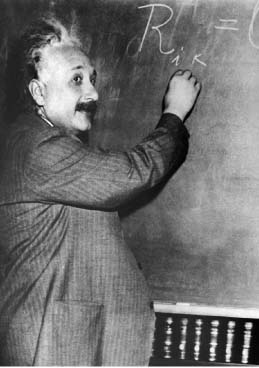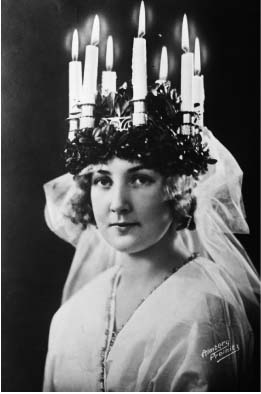Lyttelton's Britain (29 page)
Read Lyttelton's Britain Online
Authors: Iain Pattinson
During the Industrial Revolution, Rhyl became a centre of brick-making, and by the beginning of the 20th Century, many thousands of tons of bricks were going to Manchester to build housing, and to Liverpool to prop cars up.
Nearby St Asaph boasts the smallest cathedral in Britain. This is open to visitors only on Wednesdays, as that’s when they take it out of the fish tank for cleaning.
The local coastline is famous for its massive castles and the first was built by Llewelyn the Great as a royal home, but this is now a sad ruin, thanks to Llewelyn the Bowen. At a ceremony in 1194, Llewelyn the Great became Prince of Wales and was required to swear allegiance to his country, marry his cousin, and have an affair with an army major’s wife. In 1277, Edward I sent a massive army to conquer North Wales, and set about building a mighty castle at Harlech. Construction was overseen by ‘Henri de Savoy’, the French mason, who took the opportunity to sell his cut price cabbages at lodge meetings.
The Welsh coast is also noted as the last place in Britain to have been invaded by foreign troops. In 1797, a French naval force landed to be greeted by local women in their traditional scarlet costume and tall black hats. The French took them for British Redcoats and fled, clearly terrified they’d inadvertently invaded Butlins.
Inland, the area is noted for its outstanding natural beauty and down the years it has attracted many famous visitors, including Princess Margaret, who went on her honeymoon to Mount Snowdon.
At the churchyard of St Mary’s, visitors can see the Victorian monument to Nicholas Hookes, a father of 41 children, alongside his wife’s unusual ‘Y’ shaped grave.
The six miles of golden sands at Rhyl were host to the Wright Brothers, who demonstrated their new flying machine in 1907. Visitors to the town’s museum will find photographs of Wilbur sat at the controls in his flying suit, and Orville sat on his lap in a duck costume.
Famous names associated with Rhyl include Carol Vorderman, whom locals remember had a Saturday job in the chemists on Flint Street. One recalls her selling him some ointment for an embarrassing itch on his consonant, vowel, consonant, consonant.
As a student in 1897, the young Albert Einstein spent the summer in Rhyl, where he began to formulate his general theory of relativity, as he worked the season as a DJ, under the stage name ‘MC Squared’.
The radio pioneer Marconi made the first ever wireless broadcast from the top of the water tower in Rhyl, with the words: ‘Help – I’m stuck up a water tower’.

His general theory of relativity and ‘E = MC squared’ was all very well, but Einstein failed to master ‘i before e, except after c’, twice

C
ARDIFF
is the proud capital city of Wales. Although officially joined with England in 1536, the principality has preserved a unique character, thanks to a resilience born of fighting successive invasions. In turn, Romans, Saxons and Vikings were repelled by tribes banding together to terrify them with their fierce displays of close-harmony singing.
The city sits on the River Taff, which gives rise to the nick-name ‘Taffy’ for those from the Cardiff area, much in the same way as those who live alongside the River Thames in London are known as ‘Homeless’.
Although the capital city of Wales only since 1955, Cardiff has many reminders of a rich history stretching back over 2000 years. To the north is the 11th Century Castle Coch, the fairy-tale setting for many Hollywood movies. During a break from filming there in 1959, Humphrey Bogart went to visit a local colliery, where by chance he met Ingrid Bergman and was inspired to say: ‘Of all the joints in all the world, you had to walk into a mine’.

Britain’s first cinema usherette, Cardiff, 1902
But a short distance from the city centre is Cardiff Arms Park, the scene of many thrilling rugby matches. Since 1884, Wales has been a leading light in the Six Nations Cup, when the political and ethnic differences of the Irish, Scots, French, Italians and Welsh are set aside in a spirit of unity for the mutual enjoyment of sticking it up the English.
Another event to bring top class entries to Cardiff from around the globe is the annual Singer of the World Competition, possibly the greatest international sewing-machine championship of them all.
No guide to Cardiff would be complete without a mention of their fine football team. Although a fiercely proud Welsh team, Cardiff City play in the English League despite the language barrier, but they are gradually getting to grips with Italian and Portuguese.
The people of Wales have made a contribution to world events far out of proportion to the size of their population. In the 19th Century, Canada was charted by Welshman David Thompson. He spent 35 years meticulously measuring every inch of Canada and noting his findings in 77 huge volumes. He died in 1857, following a heart attack induced by the excitement of spotting some paint drying.
Thompson was also responsible for drawing the border between Canada and the USA, he being one of the few people at that time to own a two and half thousand mile, dead straight ruler.
Both of America’s greatest universities – Yale and Harvard – were founded by Welshmen. Harvard is rightly proud of its
graduates in law, business studies and science, and Yale its many superbly qualified key-cutters, who often also major in shoe repairs.
The notorious Chicago gangster, Al Capone, wasn’t Welsh, but his right-hand man ‘Machine-Gun Murray’ was. Murray was the gang’s ‘fixer’ of leading politicians and became boss for a while when Capone was in prison. Murray died in 1937, of herpes. You don’t normally die of herpes, but you did if you gave it to Al Capone’s wife.

The Cardiff-born singer, Shirley Bassey, generously gives up her time to support a World Wildlife Fund benefit concert
It was one Oliver Evans, an engineer from South Wales, who invented the first motorcar, in 1817. His machine weighed 26 tons, was driven by four enormous wheels, required massive amounts of fuel, and needed a ladder to get on board. The public never took to it, so he gave it to his wife to take the children to school.
The last truly Welsh Prince of Wales was Owen Glendower, who was even recognised by the English King John. In 1204, Glendower requested Joan, daughter of the King, for his wife. Mrs Glendower said she’d have preferred a toaster.
The current Prince of Wales was formally given the title at Caernarfon Castle. Amid much pageantry and splendour, when
he arrived for his investiture in 1969, Prince Charles took an oath, promising as Liege Lord of Wales to ‘serve, honour and protect the Welsh people from all manner of foes’. They’ve never seen him since.
The custom of wearing a leek to promote Welsh national pride is a long tradition. The leek is purported to possess all manner of special powers. It is not only said to be a cure for the common cold, but can also reduce the pain of childbirth. Practitioners of alternative medicine have been pushing for its use for years, but have been told they’ll have to push harder.
Today, the Welsh language is the most widely spoken Celtic tongue. It is closely related to Cornish and Manx, but Cornish died out over 100 years ago, while Manx is now spoken only by one man, who continues to promote its usage. Although he recently admitted that, for all the good it does, he may as well be talking to himself.

All photographs © Hulton / Getty Archival:
1
,
2
,
3
,
4
(Popperfoto),
5
,
6
,
7
,
8
,
9
,
10
,
11
,
12
(Time & Life Pictures),
13
,
14
,
15
,
16
,
17
(Photograph by Tim Graham),
18
,
19
,
20
(Photograph by Tim Graham),
21
,
22
,
23
,
24
,
73
(AFP),
25
,
26
,
27
,
28
(Time & Life Pictures),
29
,
30
,
31
,
32
(digitally modified)
33
,
34
(Popperfoto),
35
,
36
(digitally modified),
37
,
38
(Time & Life Pictures),
39
(Time & Life Pictures),
40
(Popperfoto),
41
,
42
(Time & Life Pictures),
43
(Time & Life Pictures),
44
,
45
(digitally modified),
46
,
47
,
48
,
49
(digitally modified),
50
,
51
(Popperfoto),
52
(bottom),
53
,
54
(Popperfoto),
55
,
56
,
57
,
58
,
59
,
60
(Time & Life Pictures),
61
(Time & Life Pictures),
62
,
63
,
64
,
65
,
66
,
67
,
68
,
69
,
70
,
71
,
72
(Time & Life Pictures),
73
,
74
,
75
,
76
(Getty Images News),
77
,
78
(AFP),
79
,
80
(Popperfoto)